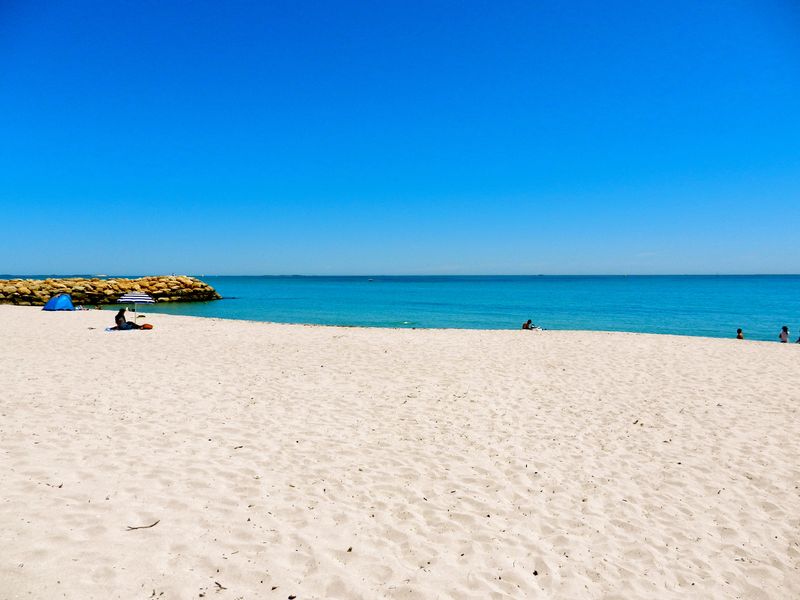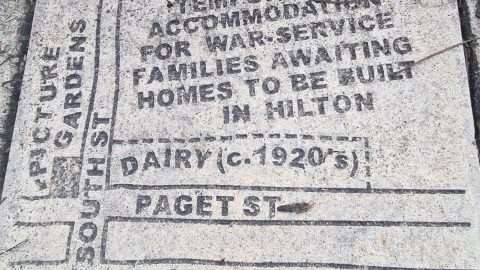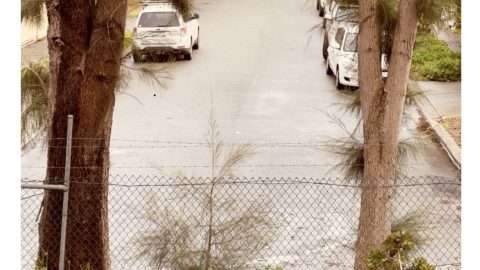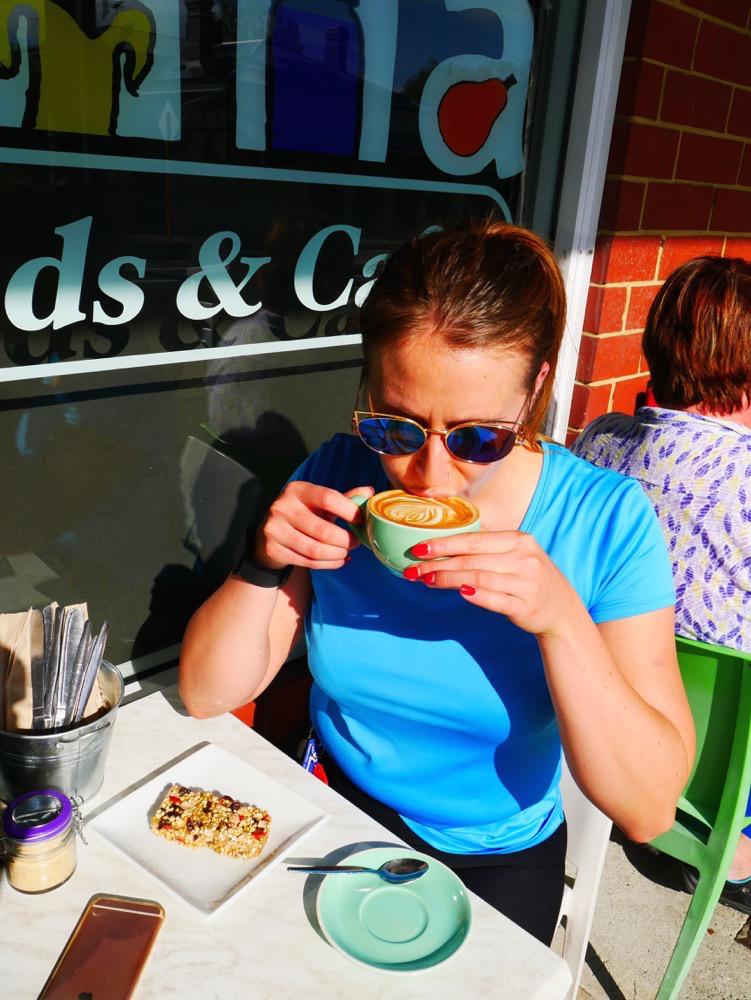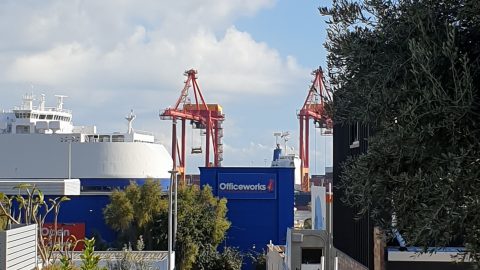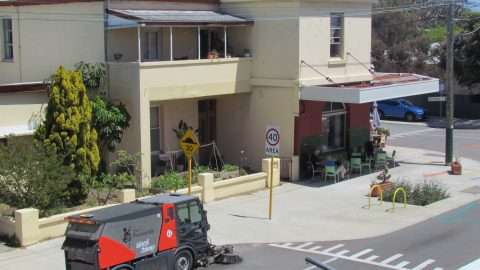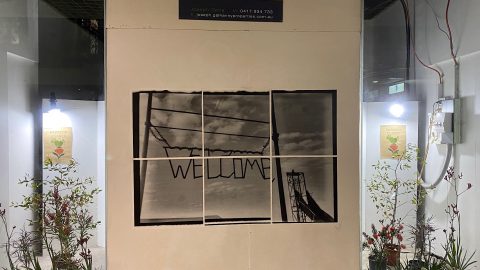In this popular Fremantle Shipping News feature – My Favourite Freo Street – we ask a range of Freo folk to nominate their favourite street and tell us why they chose it. In this contribution, Bruce Menzies* – who has a long association with Freo and has lived in Jenkin Street for the last 20 years – explains why he has chosen Jenkin Street in South Fremantle, as his fav.
The gutters are full again. Thirty years ago, a developer snapped up property bordering Belmont and Jenkin Streets. Down came the former offices of the Mills and Wares Biscuit Factory. Out came the old peppermint trees along the verge. Up went a row of townhouses – and three London Plane trees. True to form, the trees provide summer shade and allow in winter sun. Come autumn and their leaves fly hither and thither along the road and footpath, detouring into garden beds – and clogging gutters. We mutter obscenities with our neighbours as we fill our green bins with a leafy haul.
I mention this not by way of complaint but in the interests of fair comment. Apart from a few other minor irritants – stray motorcyclists thinking they’re on the speedway, late-night revellers continuing to party below our window, and the odd dog owner who allows their pooch to decorate verge plantings – Jenkin Street deserves more bouquets than brickbats.
The bouquets can wait. First, a little history.
Until 1909, Jenkin Street was known as By-the-Sea Road, a rather strange moniker given it runs perpendicular and not parallel to the ocean. The powers-that-be may have thought so too. The South Fremantle Methodist Church stood nearby and an early Reverend, one JG Jenkin, was considered worthy of a street name. And so it came to pass.
Around the time of the name change, Post Office directories list around 24 dwellings between South Beach (now Marine Terrace) and Attfield Street (before it truncated at Lefroy). Three decades later, houses extended beyond Hampton Road to Healy Road.
Heading households were men of British stock. Miss Errington, who’d studied at Trinity College in London and gave pianoforte lessons, was a notable exception.
In the absence of the Herald, locals used the pages of the Fremantle Advertiser to express their concerns. In 1928, one disgruntled correspondent took the Council to task for building a seawall of ‘unsightly rocks’ that prevented access to South Beach.
And what of the buildings? An online search of heritage listings paints a picture.
Pride of place, at least historically, are the row of cottages on the northern side of the street, before it meets Marine Terrace. Dating from around 1902, five iron, brick and limestone single-storey terrace houses are typical examples of workers cottages of the era. Each have or had an open veranda facing the street and rear access via a lane. Interestingly, the cottages sit a couple of metres above street level, allowing occupants both privacy and the option to keep an eye open for visitors and passers-by.
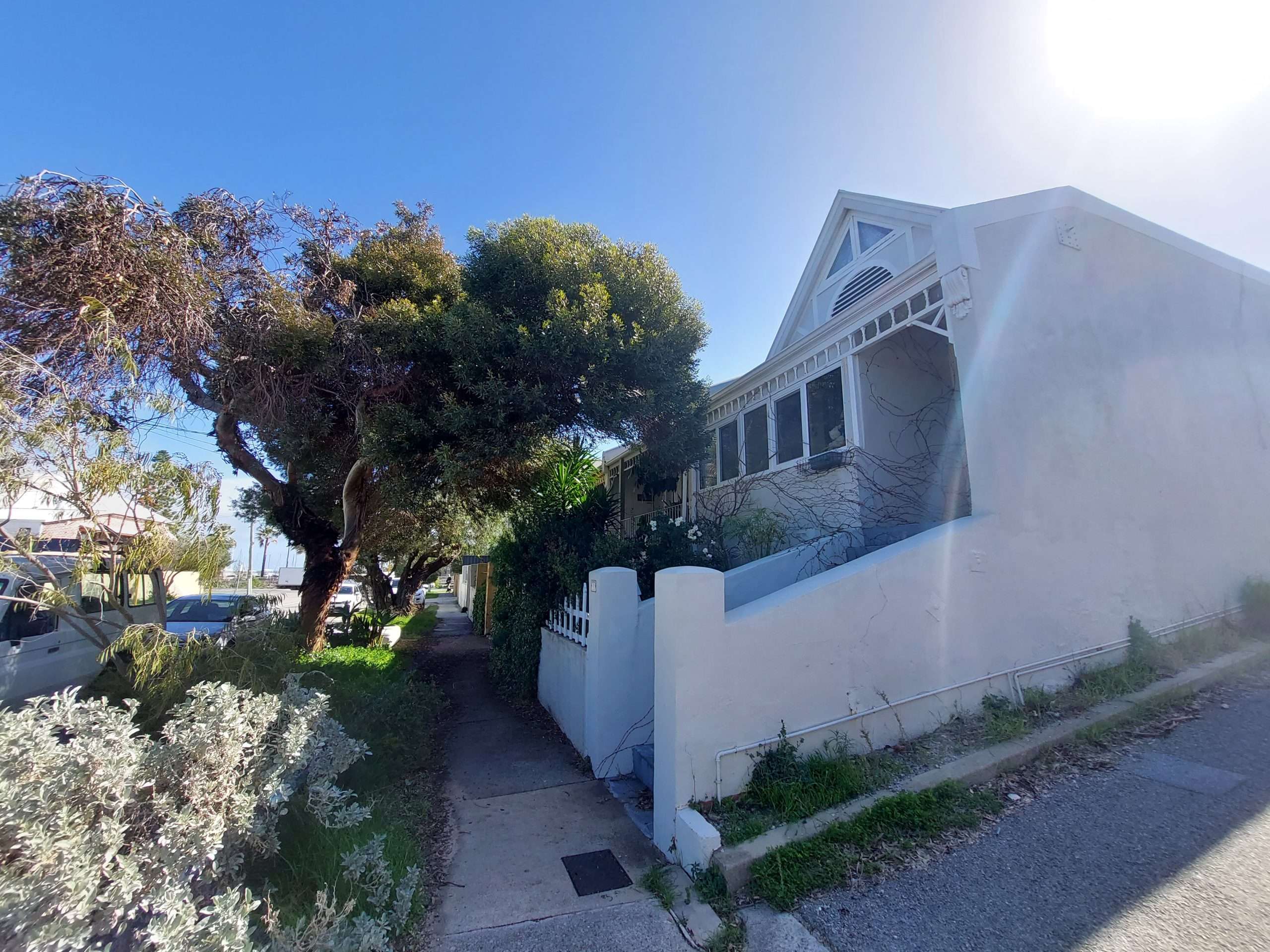
We can’t talk about Jenkin Street without mentioning Mills and Wares. (See 1978 picture below.) Before the biscuit and cake factory closed in 1992, it was a significant employer of women, including many migrants. Though some might quibble about the cavernous underground car park and the ubiquitous air conditioning units strewn throughout the apartment complex,the ‘biscuit factory village’ wound up as relatively modern, while retaining past elements and offering recreational and reflective open courtyard space, tucked above passing vehicle and pedestrian traffic. Incorporated into the site plan, various business premises front South Terrace, book-ended by an art gallery and a restaurant.

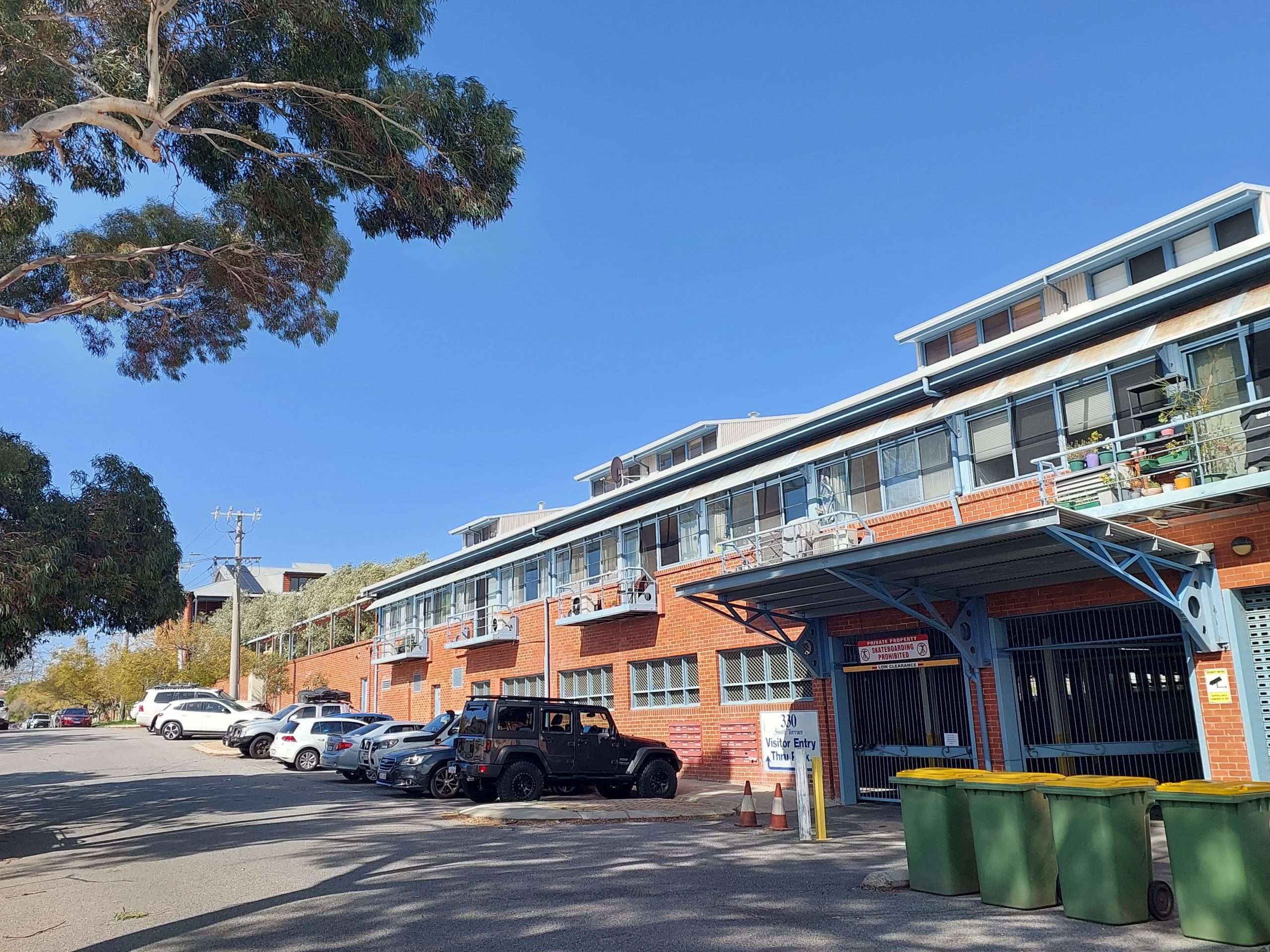
By the 1970s, the Fremantle Society, with a firm eye on preservation and conservation, identified heritage value across Fremantle precincts. Jenkin Street was no exception. Approaching 1990, the tide had retreated, green-lighting demolition and reconstruction. Properties affected included:
• No. 29 – occupied in 1895 by a local carrier, it morphed into a weatherboard residence with a front veranda before being demolished around 1995.
• No. 31 – owned by a stonemason from around 1900 to 1930, this brick house gave way to a new residence around 1988.
Other listings reflect renovated and extended properties that retain some flavour of the past:
• No. 7 – an asbestos and iron home dating from around 1900, built in the Federation bungalow style, and shown in a 1993 photograph with a skillion veranda across the front of the house.
• No. 21 -– the old Mills and Wares flour loft, converted into three-storey apartments.
• No. 33 – built in 1915 as a typical iron roof single-storey house, now subject to a major renovation.
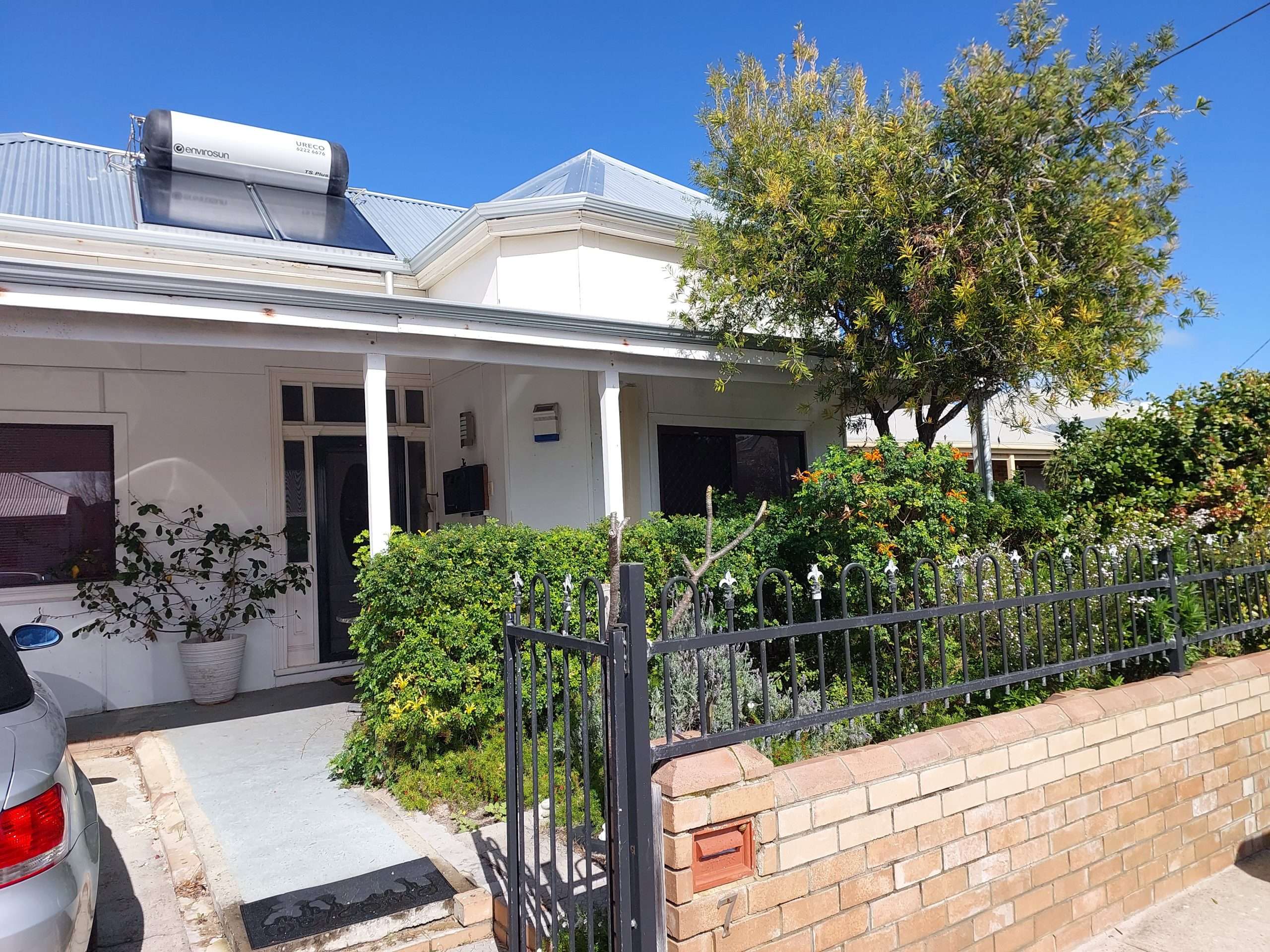
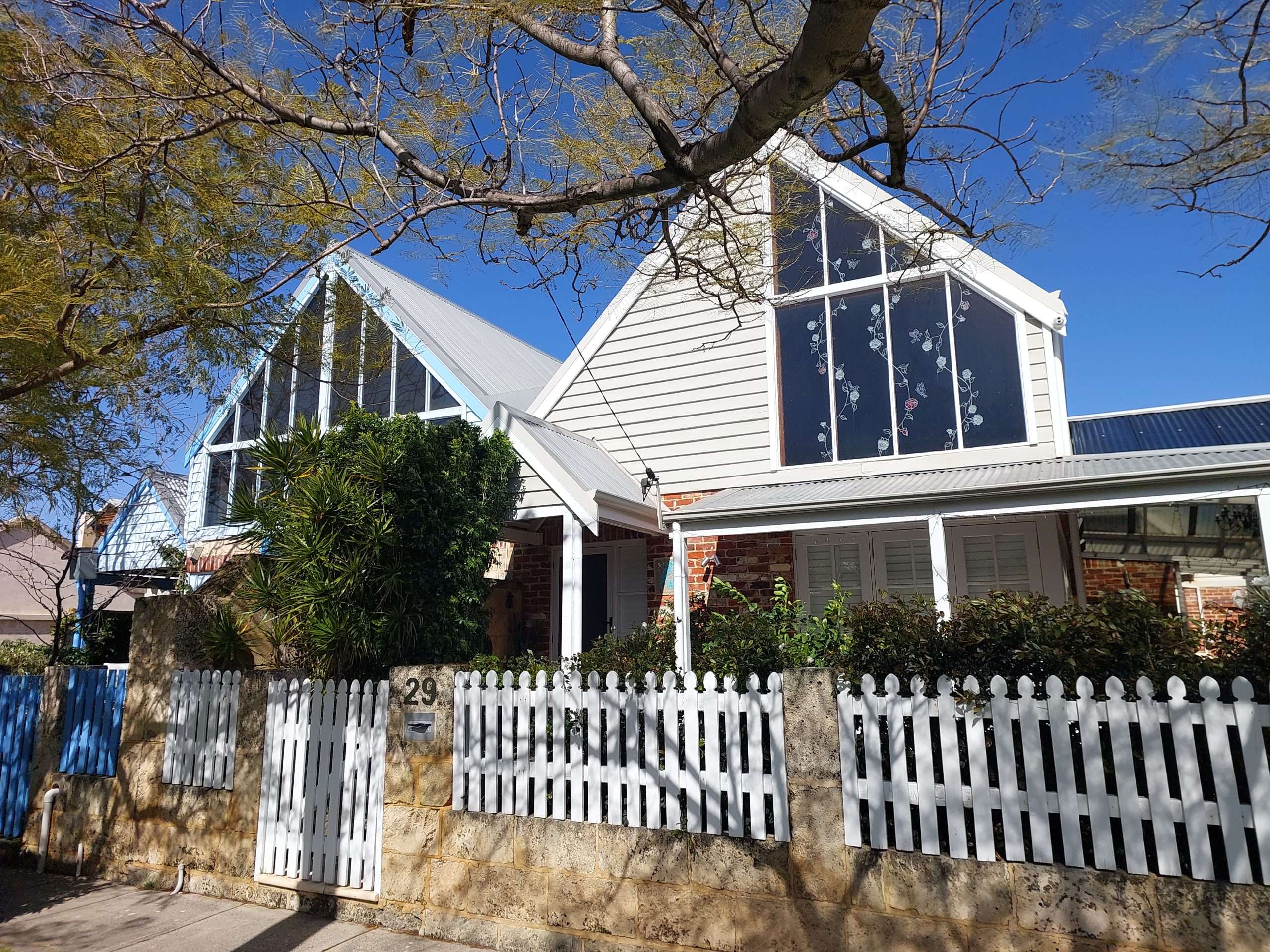
Heritage aside, what turns me on about where I live? Location, location, location. A five-minute bicycle ride to South Beach. A twenty-minute walk into the heart of Fremantle. Perched high in the pecking order, a short stroll to cafés and restaurants along South Terrace.
A century ago, I was not around to be a patron of Mrs Christine Payne, greengrocer and draper. Neither to buy snags from her adjacent neighbour, Horace Baker, the butcher. But sites evolve as businesses change. Later versions – The Copper Chimney and La Vespa (until it’s very recent closure) – have done pretty well out of me over the years. Not having to think too much about where to caffeinate or grab a takeaway on a Friday night is a bonus.
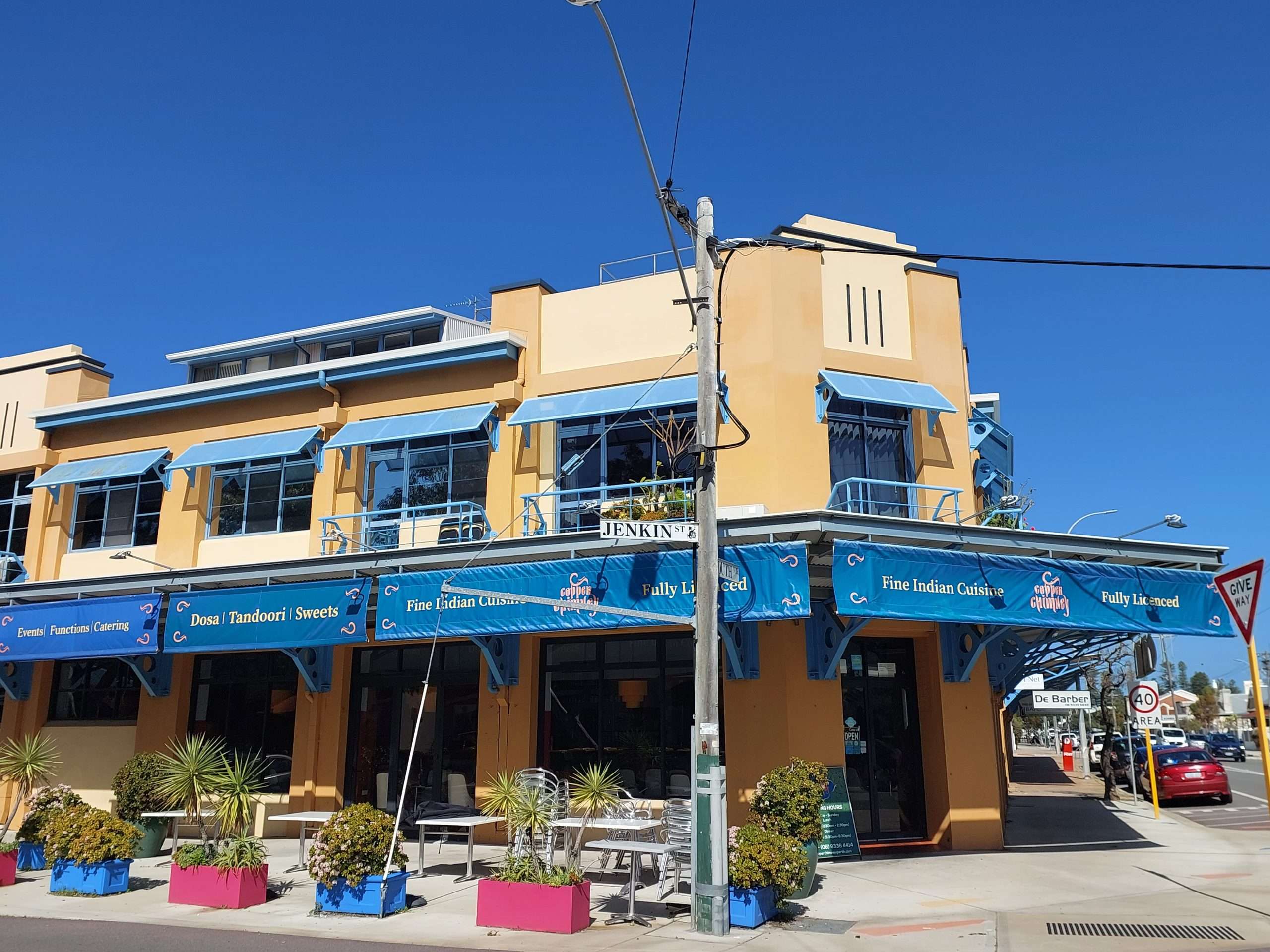
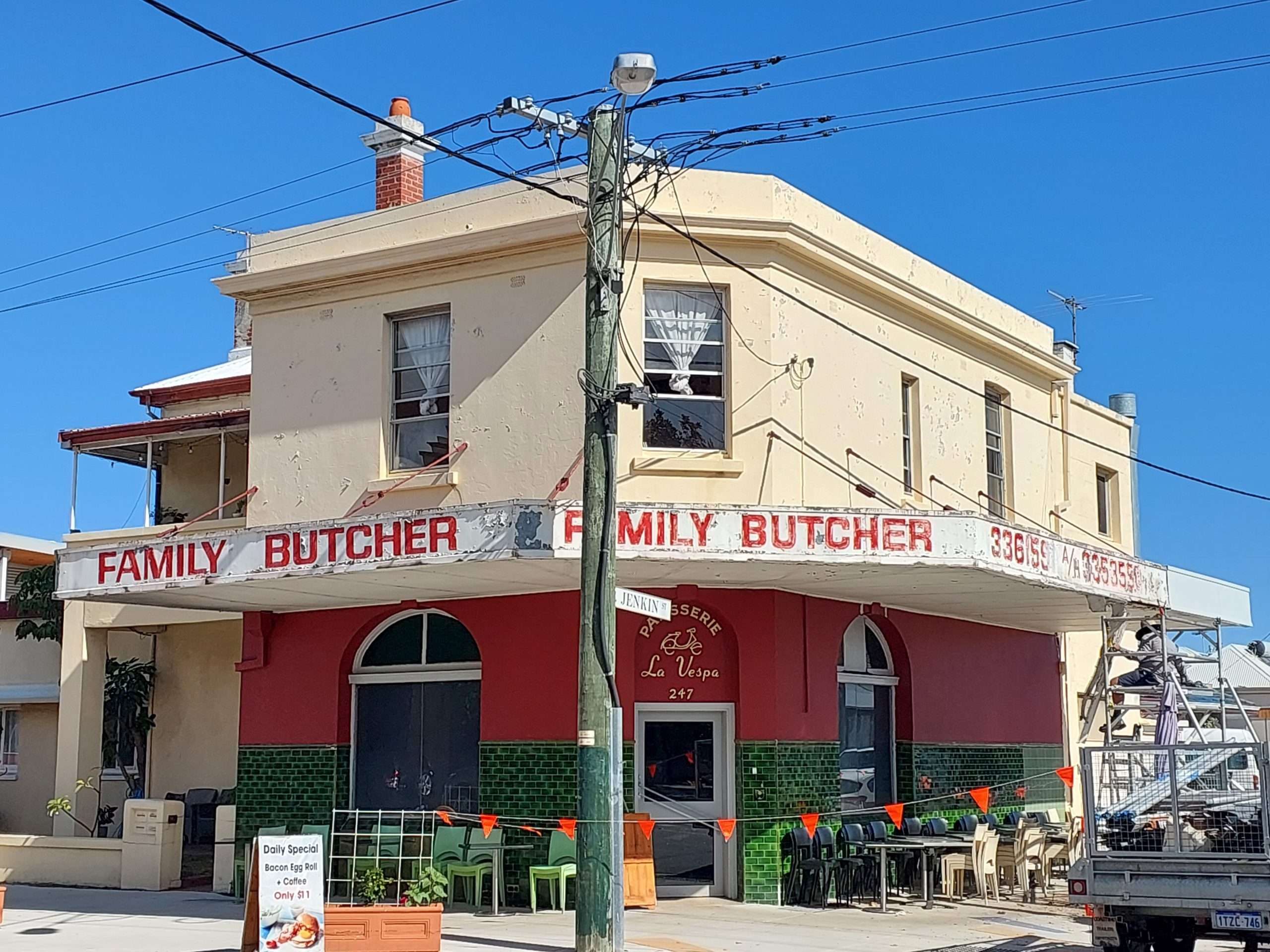
Life does not stand still. Not much remains of bullnose verandas and tuck-pointed brickwork. Outside dunnies are a thing of the past. If you stroll the street you will find a smorgasbord of building styles, many more sympathetic to the environment than the older versions. Fortunately, narrow frontages and modest block sizes stymie a swathe of McMansions. For the most part, new or renovated houses are human-friendly and easy on the eye.
Another aspect that tickles the fancy is the small park squatting between the Mills and Wares apartments and their larger cousins on the former flour storage site. With its olive trees and benches, this splurge of green habitat was a place of hibernation and connection during Covid times. Hats off to the planners who had the foresight to plonk this into the design for the Biscuit Factory Village.
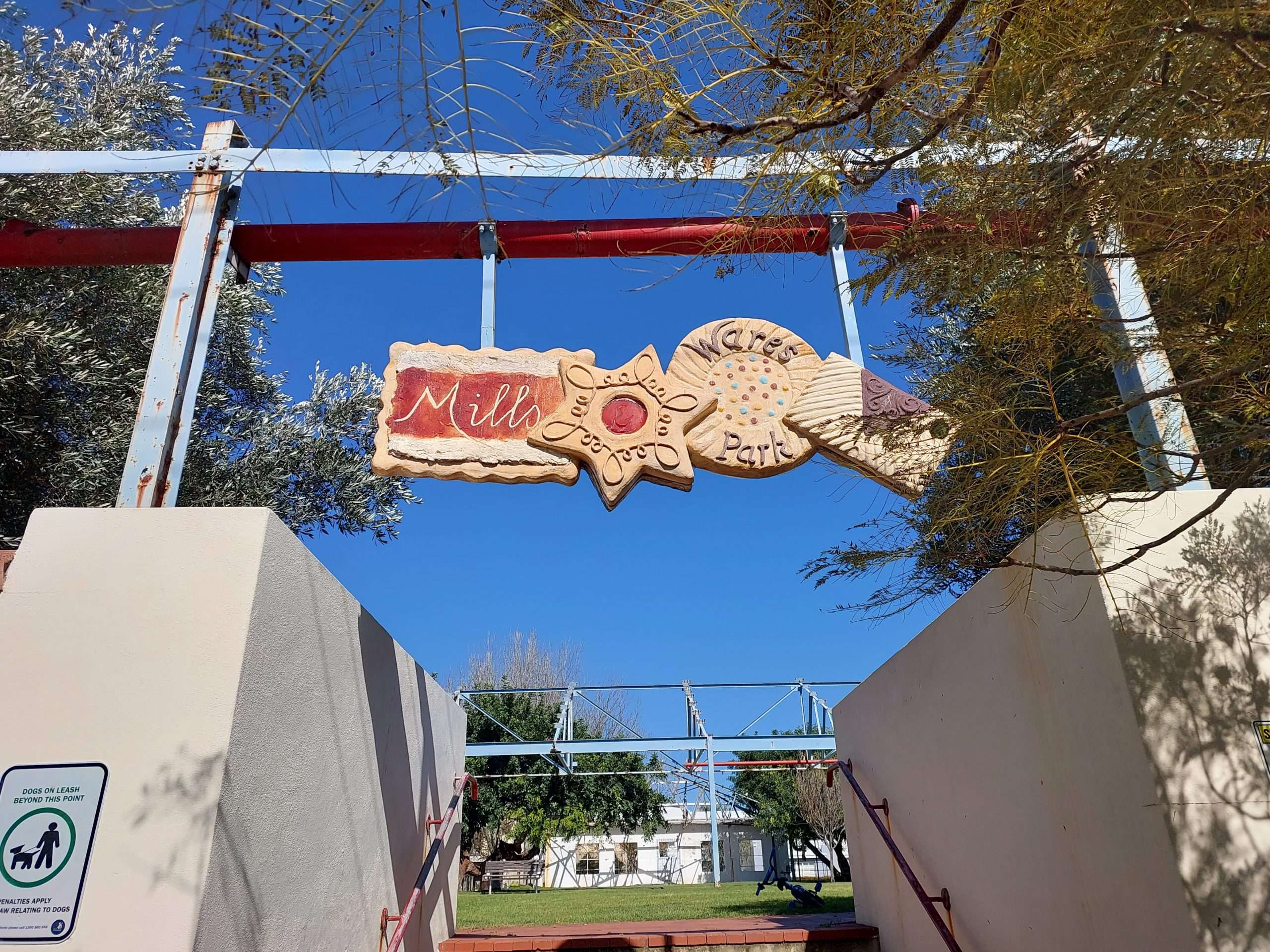
Speaking of habitat, our street could do better. While native verge gardens are dotted here and there, other owners seem attached to a patch of lawn. Their prerogative, of course but I gain heart when I see wattle birds and honeyeaters relishing the flowering grevilleas in our front courtyard. Across the road, doves and magpies roost on the wires, occasionally displaced by pink galahs that swoop and squawk in search of discarded nuts from nearby pines.
Unlike some pockets of Fremantle, we don’t exude a neighbourly aroma. No street parties or nattering over food and wine. Perhaps we are too much of a thoroughfare, with a steep rise approaching Chester Street and then a dip towards Hampton Road. Perhaps no one has seen fit to take up the cause. Yet within our townhouse complex the vibe is friendly, the gossip is relatively harmless, and cooperation is the norm. It probably helps that most of us are long-term owners.
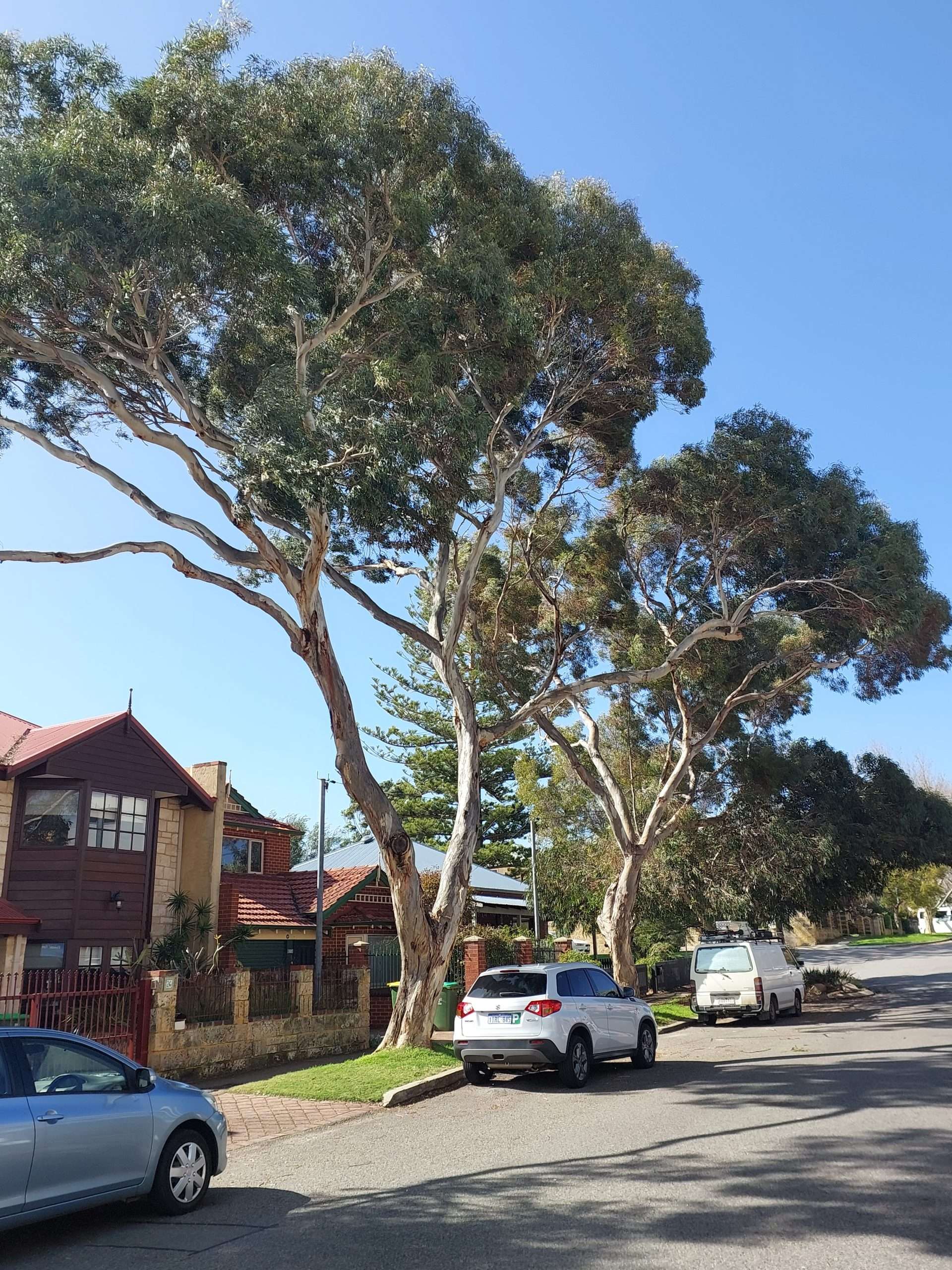
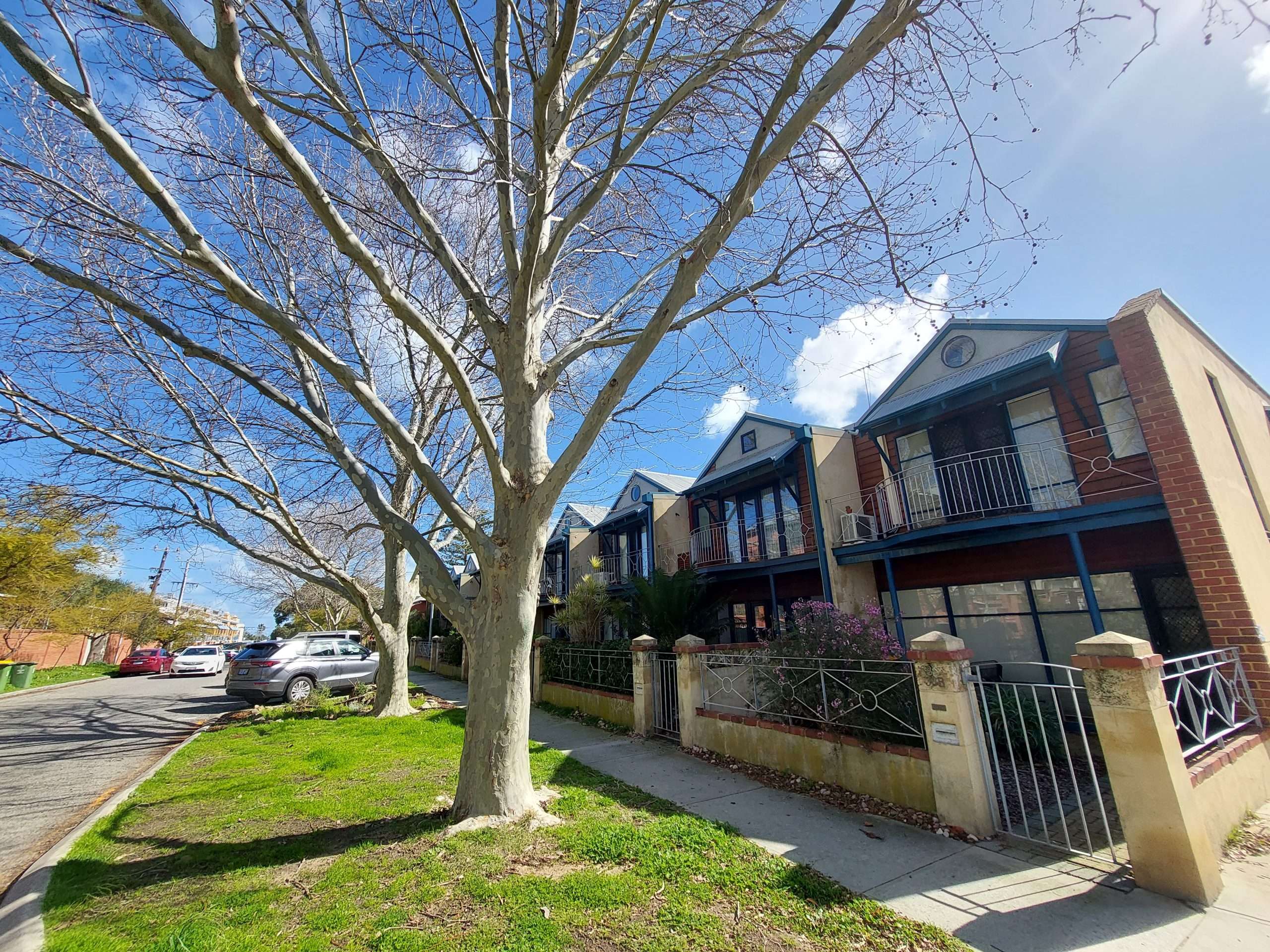
During my twenty years as a resident, Jenkin Street has changed little in appearance. Houses tend to be renovated rather than rebuilt. A few sturdy peppermints remain. Plane trees not yet ring-barked by a disgruntled citizen. Approaching South Terrace, a troika of eucalypts add grace and stature, despite dropping the occasional limb. Others screen the collection of cottages at the western end, juxtaposed against a line of olive trees on the opposite side of the street.
Parking is a headache although we are no orphan in that regard. Weekends can be crazy but my compatriots from northern suburbs usually found a spot when we would assemble on Thursdays for caffeine and patisseries at La Vespa. (We’re still getting our heads around its pending reincarnation as Olive and Oil).
Non-reliance on a motor vehicle remains a cause for satisfaction. Library books can be returned to The Meeting Place – a community asset on one corner of Jenkin and South Terrace. On a Saturday morning, I head down to the South Freo Conti for my newspaper, often exchanging pleasantries with fellow early-birds, Neville, Ian or Anton. The chances are Charlie will be sitting on his bench, headphones in place and tapping away to the music. Other street dwellers, known only by appearance, nod and smile.
Whether in a rural or urban landscape, a street is not simply a stretch of gravel or bitumen flanked by a succession of homes and commercial outlets. At its best, it’s attuned to the natural environment as well as being a human habitat. At its best, it inculcates a shared sense of place and space. At its best, it fosters social interaction which, as my good mate reminds us, fosters well-being.
Jenkin Street, along with Freo in general, has its flaws. But these are relative. Bouquets outweigh brickbats by a country mile. I, for one, am happy to have found a nest here.
By Bruce Menzies
* Over the summer, as a uni student, Bruce Menzies earned drinking money at Letchford’s soft drink factory on Hampton Road (interrupted one year by a brief stint in the slaughterhouse at Robb Jetty). Heaped plates of spag bol at old Roma on High Street, washed down with cheap BYO red, provided regular sustenance. When it came time for a proper job, a legal career beckoned at Frank Unmack & Cullen on Market Street, a drop kick from the salubrious National Hotel. Years later, a weatherboard cottage in Blinco Street came to pass – and two decades ago, after a Denmark interlude, a town house in Jenkin Street offered a return to the Freo fold.
~ If you’d like to hear Bruce tell his own story in our intriguing podcast with him, or find more of his contributions in Fremantle Shipping News look here
~ You will find more My Favourite Freo Street articles right here
~ If you’d like to COMMENT on this or any of our stories, don’t hesitate to email our Editor.
~ WHILE YOU ARE HERE –
PLEASE HELP US TO GROW FREMANTLE SHIPPING NEWS
FSN is a reader-supported, volunteer-assisted online magazine all about Fremantle. Thanks for helping to keep FSN keeping on!
